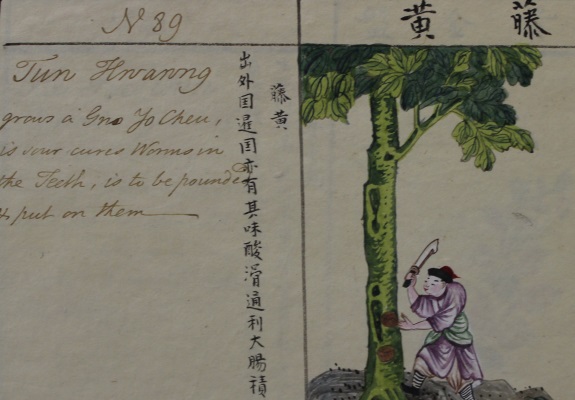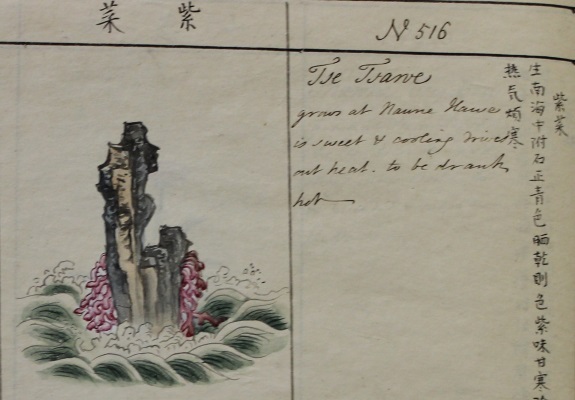Since 1518, the RCP has been collecting books, manuscripts, art and objects which reflect the diverse interests of its Members and Fellows. The RCP’s collections tell the story of life and death, health and disease, knowledge and superstition, fortune and catastrophe.
In celebration of our anniversary year, the RCP Museum team has developed a new heritage trail called Curator’s Curiosities to allow us to share with the public some of the more curious stories behind our special collections. Alongside special purple signs around our Regent’s Park building, we are featuring monthly rotating displays of treasures from our stores which are rarely exhibited. For our second featured object I have chosen this beautifully illustrated item, which is a fascinating reminder of the global reach of British trade in the 18th century.
This volume contains 814 water colour drawings of medicinal plants and animals, with directions in Chinese and English for their preparation and use. It was produced in China in the 18th century, probably between 1748 and 1757. It is inscribed with "This Book was Sir Charles Raymond's, a present from Captain J. Hindman". Both Raymond and Hindman worked for the East India Company.

This mercantile company, which gained its charter in 1600 from Queen Elizabeth I, became a major force in world trade. At one point it controlled approximately half the global trade in basic commodities. The East India Company also ruled large swathes of the emerging British Empire in India from the 1750s to the 1850s, using an extensive private army.
Raymond made six voyages for the company, four of them as a ship’s captain, although he never visited China. He made his fortune and returned to England, where he managed ships for the company. He also became a director of the Sun Fire Office and later a banker, also earning a baronetcy.
Hindman was an officer on Raymond’s vessel, the Wager. When Raymond retired, and took over managing the Wager. He made Hindman the captain. Hindman visited China twice, in 1748 and 1756. It is likely that he commissioned or purchased this volume on one of his trips.
Chinese goods, from silks and tea to opium, made huge profits for the company and its representatives . But a less obvious profit from this global economy came from the trade in knowledge and ideas. I picked this object because it demonstrates the riches in terms of cultural interaction that global trade made possible.

The text is in both Chinese characters and English. The punctuation suggests it was copied by someone who didn’t fully understand the English words. Some entries, like the one for the dragon (fictitious), have a full explanation in Chinese but only a name in English. The illustrations include all kinds of plants and animals; including shrubs, flowers, berries, leaves, fungus, snakes, beetles, flies, caterpillars, frogs etc.
This item will be on display in the treasures room from 15 February to 15 March 2018.
